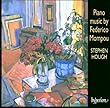As my regular readers know, my mother passed away last December after an extended illness, and I still haven't really gotten out of that cloud yet. You can read my December 2010 post about her, and our musical connection, here.
Late last night (July 6), I finally finished one of those projects that we had planned to do together. Mama wrote a song years ago, as a young girl. It may be better to say that she "made it up", since she could not read or write music. The name of the song was "In the Arms of Jesus", and to my knowledge there were never any words. A phone conversation in August 2011 with my aunt LaVelle Langley affirmed my belief that there were no words to the song. Also, Aunt LaVelle recalls hearing Mama play it often, which is something that my brother and sister do not recall - understandable since they did not spend as much time with Mama at the piano as I did.
I wanted to make videos of Mama's playing while she was still able, but she had "camera fright", and arthritis got to her before the COPD-related dementia did. The touch of my Baldwin grand was too heavy for her to play comfortably. I had promised her for years that I would write "her song" down.
That finally happened last night after a practice session with an old friend, the Liszt Sonetto 104 del Petrarca. I tinkered with Mama's song for around an hour, and decided to give it a new voice.
After I wrote it out, I decided to make a "demo" video to share with friends and family on Facebook. The original plan was to make another video for YouTube (and this blog) after church Sunday, on a better-regulated instrument. This Baldwin grand, my pride and joy (and a college-graduation gift from Mama and Papa Doug), has not been tuned since nineteen-eighty-something - one of the few "downsides" of living in the country is finding a reliable tuner/technician.
In the end I decided to post this "rough video" after all. This is where I had most recently heard her play her version, on this piano in this room, and this is a rare opportunity for me to let you in Mama's living room for possibly one last time as the estate is settled, as our family home may not stay in the family. With five bedrooms, three bathrooms, and eleven ACRES of yard, it is far too large for me to maintain on my own.
Here it is. I have left her tune as is and recast it in "my style", rather than in the hymn-like chordal way in which she played it. I have retitled it "Mama's Song". Why?
We all have different religious beliefs, but we all have, or have had, a Mama.
Why the link to this book? Although it has nothing to do with music, it always reminded me of Mama - I loaned her my copy and she read it, and enjoyed it very much. Also, author Rick Bragg grew up in Jacksonville, Alabama and studied at Jacksonville State University at the very same time as me, so I remember well the places he describes in this book.






